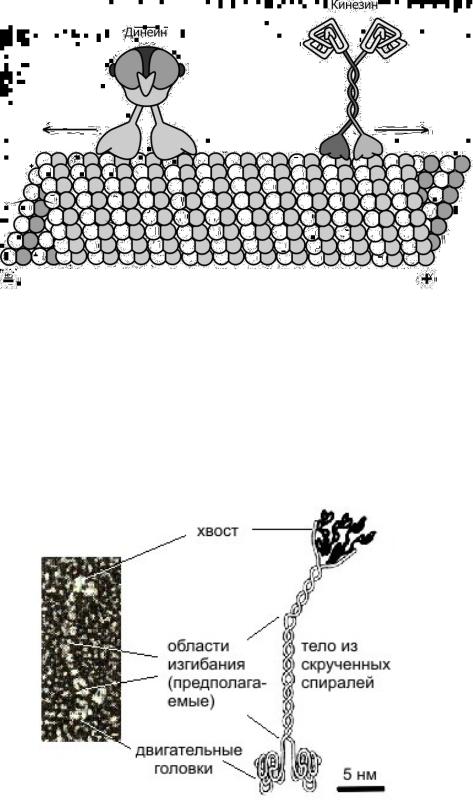If garlic turned green in pickled mushrooms. Why is Chinese garlic green? Interesting facts - why garlic turns green. Canned recipes in which the garlic does not turn blue
Salted lard yesterday, and today the garlic on it turned green, before this was not there and what to do, toss out or is this normal?
Such questions are asked a lot. Consider which garlic is green and why. And most importantly - is it dangerous. Won't the products in which the garlic has turned green spoiled.
Russia has long been famous for its abundance of myths. This kind of "folklore" did not bypass its attention and the so-called Chinese garlic. Not the one that has the second name fragrant onion, according to the scientific name - Allium chinens, with heads like small onion sets, but the one that has flooded today all the stores in Russia and a significant part of the planet. For China now controls about 77% of the world's exports of this spicy plant.
However, the name “garlic of Chinese selection” has taken root throughout the world. For example, in Spain, the leading European country for the production of this spicy product, 15-20% of the area is allocated for the Chinese variety. Under the Spanish regionalized variety of the same Chinese selection, called "white variety" - about 20-25%, and under the local dark purple, called "Morado", more than half of all garlic plantations are allocated.
What kind of rumors and gossip does not go about the Chinese variety. A Russian inhabitant, once having bought Chinese sneakers at a bargain price, made in China according to the specifications of a Russian entrepreneur, suffers a grudge against everything produced in this country. At the same time, he forgets the simple truth that cheap quality cannot be, and half of the planet uses Chinese goods and products without any complaints. For all these products comply with the strictest international standards (as evidenced by laboratory research), or ... the technical specifications of the customer, which are dictated by the demand of the same Russian offended man in the street.
Why is he turning green?
The main gripe and ground for the myths of Chinese garlic was its property to turn green and even turn blue. From here came the myths about the use of "chemistry" or GMOs, which the Russians are paranoidly afraid of. About GMOs you can "make happy" those who have not studied biology at school. By the end of 2014, not a single GM species of this plant was created on planet Earth. This is a fairly stable and healthy culture with a very wide variety of varieties, able to protect itself from most diseases and insects without additional protective measures vaccinated with GM. And from other misfortunes there are more familiar and “safe”, according to opponents of GMOs, fungicides and insecticides.
In fact, the problem of pigmentation of this useful plant during its processing arose far from in Russia. Back in the 50s of the last century in the United States, garlic in industrial volumes began to be processed into canned puree. The process was simple to the limit. The heads and teeth were cleaned and ground, then acetic acid and salt were added to the paste, closed in jars and pasteurized. However, the contents in some banks acquired a blue-green color and therefore, due to the unmarketable appearance, such products went into marriage. This effect laid the foundation for research, which, of course, the Russian consumer does not know and does not want to know, because it’s much easier to stick to a normal product, a GMO label, “chemistry”, or even worse, “Chinese poison us”.
Currently obtained the following scientific data. It is known that when garlic tissue is damaged, its components such as enzymes and essential oils are released and mixed. When exposed to an enzyme called alinase, the decomposition of alliin, a substance containing sulfur and nitrogen (the full scientific name is allyl sulfide cysteine \u200b\u200bsulfoxide), is stimulated. The result of the reaction is partially decomposed essential oils - organic derivatives of sulfides and sulfates. Some of these compounds decompose into pyruvic acid, ammonia and thiol. The other part, having reacted with amino acids, forms very strong pigments, which create a color from green to blue.
Obviously, there is a certain boundary in the ratio of the amount of the enzyme alinase, on the one hand, and alliin with other sulfur-containing compounds, on the other. If not all of them decompose into pyruvic acid, ammonia and thiol, then as a result such a paste acquires a green color. Moreover, the border of these concentrations is so thin that, according to the degree of pigmentation, plants even from neighboring beds can behave completely differently. This reaction takes place more actively in the presence of amino acids, at a temperature of + 40–80 ° C in a slightly acidic environment. However, the synthesis of the pigment is practically independent of the variety, the presence of metals or their salts, as well as the amount of various trace elements in the plant. To a greater extent, the tendency to pigmentation depends on the degree of maturity, the conditions for the growth and storage of garlic.
It has long been known that garlic, grown in a warm climate, is most useful. Under these conditions, the plant ripens completely. However, it is in such plants that the largest amount of alliin and other sulfur-containing compounds are contained, which are considered natural substitutes for antibiotics. They give intense pigmentation during processing. That is why southern garlic, in particular Chinese, almost always turns green or blue, unlike its northern counterpart. It’s just that in our latitudes he doesn’t have time to ripen, because his native land is India, and in the Central Russian cool climate there are not very many such substances formed in it. As a result, the conclusion contradicts Russian mythology: garlic grown in southern countries, including China or Uzbekistan, almost always turns green, but it contains more nutrients than ... Russian. Interestingly, plants grown in Spain have the same pigmentation ability.
What to do?
The first is not to fantasize or listen to myths. And remember that the formula “leaves must be green and teeth white, and vice versa cannot be” is just a stereotype of aesthetic perception. Garlic that can turn green is not poison and is even healthier than regular ... unripe. But since one wants to avoid this effect, it should be remembered that the substances responsible for pigmentation are contained less in freshly harvested and young heads and more in ripened ones. During storage, the amount of these substances increases. Most of them accumulate during cold storage - from +1 to +5 ° C and much less during room storage. Moreover, their number may even decrease when the storage temperature changes from cold to room mode.
The pigmentation reaction slows down significantly at low temperatures, which speaks in favor of storing ready-made products with garlic of southern origin in the refrigerator or in a cold basement. As a result of a series of experiments, it was found that almost any variety of any origin becomes green if the appropriate conditions are created for it. For example, when pickling or pickling, the peeled teeth with mechanical damage and incisions turn green from the long-harvested and “ripened” crop, dried by the hot method and chilled under a blanket for a long time. In some cases, pigmentation can be slowed down or even completely eliminated by preliminary 3-minute blanching of such teeth in hot water.
In pickling and pickling recipes they often write “take freshly picked fresh garlic” - this is one of the conditions that it will not turn green. In Russia, young, recently harvested garlic has always been used for pickling and pickling, and it was used mainly for harvesting using the cold method. They were cleaned with hands so as not to damage the teeth and used them in their entirety when pickling and pickling other vegetables, for example, cucumbers.
The teeth cut into slices with a knife could turn blue in both cucumbers and tomatoes with the hot preservation method in a weakly acid marinade and especially with room storage.
If chopped, crushed or chopped garlic turns green in hot dishes, then temperature and time factors play a role. The longer he stays in these dishes, the more likely he will turn green. In this case, it makes sense to use dried or lightly roasted garlic. Do not forget the folk wisdom that says that garlic is served separately. For example, in Russian traditional cuisine they are rubbed with a grain of bread or served something like a sandwich in the form of a crust of bread, poured with sunflower oil with cloves placed on top, cut into thin slices. In Ukrainian cuisine, donuts and a separate bowl with garlic dressing are served.
The same factors work when cooking mushrooms, where, in addition, their complex protein composition plays a significant role. Green garlic in mushrooms scares especially suspicious Russians. However, this does not correlate with their toxicity. In order to avoid such a “terrible” pigmentation, it is recommended to take deliberately young garlic, add it only with the cold harvesting method, or season it with a dish immediately before serving.
Now about the fat. There are times when even ordinary Russian garlic with lard turns green. In this case, the lard should be stuffed with coarsely chopped teeth and stored in the cold. At low temperatures, pigmentation is much slower.
And again about the "danger" of green garlic. In the hottest areas of the planet, such a phenomenon is observed much more often than in Russia, which encountered it only when it became too lazy to grow its own, and it switched to imported, cultivated in southern countries. However, not a single case of poisoning with green garlic has been recorded in any of these countries in the entire history of its consumption. So enjoy your meal and don’t pay attention to the somewhat psychedelic appearance of such a product.
Often in an acidic environment, garlic cloves change color. There are many theories and opinions about why this is happening. Among all views there are associated with:
- the nuances of plant breeding;
- harmful ecology or other negative factors when growing.
Not all of them are true. So let's figure out why garlic turns blue when pickled.
Scientists research
Changing the color of garlic is the topic of one of the most serious studies of biologists. Such an unusual question faced the US processing industry in the 50s of the 20th century. When the idea came up to sell mashed fresh garlic, canned in jars. The simplest natural antibiotics, acetic acid and salt, were chosen as preservatives. However, the very first batch released from the assembly line was rejected due to the unusual color of the product. The mashed potatoes in the jars acquired a blue-green color.
Such an unexpected reaction could not but cause discussion. Biological and chemical experiments began in order to get an answer to the question of why garlic turns blue when pickled.
After some time, scientists have identified the following chain of related reactions in garlic tissues:
- tissue damage - occurs when cleaning teeth, washing, cutting or crushing them;
- the release of volatile, enzymes and essential oils - as a result, a smell characteristic of a vegetable appears;
- the interaction of enzymes, phytoncides and essential oils begins - under the action of alinase, alliin decomposes (the chemical name of the substance is allyl sulfide cysteine \u200b\u200bsulfoxide) contained in garlic;
- the next stage is the appearance of sulfur and nitrogen, as a result - the decomposition of organic essential oils - sulfides and sulfates;
- the appearance of ammonia, thiol and pyruvic acid;
- then comes the reaction of amino acids and the emergence of potent pigments - they lead to the appearance of a blue and green shade of garlic tissues.
The same thing happens when adding cloves to other vegetable preparations. Why does garlic turn blue when pickling tomatoes? The answer will be the same chain of chemical reactions.
Causes
What are the reasons for such a random reaction? Why does garlic turn blue when pickled?
From the same studies, it is known for certain that the content of microelements and macroelements in a vegetable does not affect the degree of stainability. That is, in the composition of the plant itself there are no substances that affect the color change. And no gene modification of the DNA structure of a vegetable has anything to do with it.
And the answers to the insidious question will be:
- the degree of botanical maturity of the vegetable;
- growing conditions (not a clean environment, namely, conditions - air temperature, soil and air humidity, changes in these indicators);
- storage conditions.

Do growing methods influence?
Garlic cultivation methods are largely responsible for the increased pigmentation of the vegetable.
Garlic grown in a greenhouse or in a warm (hot) climate has a great chance of changing color to and green when harvesting it for the winter. The fact is that with high temperature indicators, the cloves fully ripen. That is, a lot of the alliin substance initial for the reaction arises in them. Consequently, more sulfur-containing particles and various compounds. They are responsible for the amount of volatile production (preservatives) and all the interaction of molecules, leading to a color change.
How to choose garlic?
When buying garlic, pay attention to where it was grown. If in warm and hot areas - during harvesting it will change color. But a vegetable from a cool garden, grown in a temperate climate, is more likely to remain attractively white during storage and after preservation.
How to grow garlic that does not turn blue?
But what if your bed of garlic is in a hot area of \u200b\u200bthe country? Try to form a bed and plant cloves in a place shaded from tall trees. Do not get involved in watering and using nitrogen-based chemical fertilizers. Pull garlic from the ground to the full stage of its botanical ripening. Interestingly, for different this term varies.
For harvesting, take young vegetable heads. They have a thin uncoated skin. Such heads do not need to be divided into cloves, just remove the top layer of dry husk.

The influence of spices and seasonings
But it also happens that blue-green or darkened garlic comes out of the "cool garden". This may depend on the composition of the products during harvesting. Grayish-dirty shades of vegetables can take when adding spices and seasonings, such as:
- ground or whole cinnamon;
- whole or ground clove inflorescences;
- ground pepper.
Change the color of vegetables can also special mixtures of spices and seasonings for pickling and other types of harvesting. The cloves of garlic do not become harmful or unfit for use. The chemical process of the interaction of two or more components of a dish just happens. And do not forget that any spices, seasonings or spicy greens are natural food colors.

Blueberry garlic: benefit or harm?
There is no harm from a discolored vegetable. Blue garlic does not affect the taste of snacks and pickles. No specific studies have been found regarding the use of such a vegetable in food. However, it is known that all the beneficial substances inherent in fresh garlic remain in it. But in smaller quantities. This is due to the usual loss of part of the nutrients after heat treatment. The finer the sliced \u200b\u200bgarlic, the greater the loss. The average loss is 40%.
Solution - use fresh garlic - add to salads, prepare dressings with fresh herbs.

How to avoid blueing of garlic?
You can prevent the replacement of a white vegetable with a dark one by the following methods:
- do not keep fresh garlic warm, only cool;
- do not keep preservation with this onion vegetable in a warm or hot room;
- do not wrap jars of pickled garlic in blankets or bedspreads to prolong natural cooling.
So we figured out why the garlic turns blue when pickled. The reasons and solution to this problem are quite simple and have nothing to do with selection or harmful ecology.
It happens that a vegetable changes color not only in vegetable harvesting, but also:
- during storage;
- when added to hot or cold dishes;
- with salting of lard;
- when pickling mushrooms.
The solution is the same - do not keep it and dishes with it warm, fry or sauté before putting it into soup or a second dish.

Pickling recipe
Many housewives do not know why garlic turns blue when pickling cucumbers, because they did not encounter such changes. Having grown vegetables in the garden in the cool climate of central Russia, they harvest all the preservation with them for the winter. We offer you one of the recipes for harvesting cucumbers with garlic.
Ingredients:
- cucumbers per 1 can of 1 liter;
- 1 tbsp. l coarse grinding extra grade salt;
- 1 tablet of aspirin;
- horseradish leaf;
- dill inflorescence;
- head of young garlic.

How to cook: step by step instructions
- Sort and rinse vegetables and herbs. Cucumbers choose a small size (gherkins can be). Take the young garlic head - clean it from dry scales, but do not separate it into the cloves. So the beneficial phytoncidal substances of the vegetable will be preserved to a greater extent.
- Rinse and sterilize the jar and lid with boiling water or boiling steam. You can do this like this - pour a can of boiling water into a jar of warm water, and pour and fill the can after 2-3 minutes. Keep the lid in a pot of boiling water until the snack is clogged.
- Put garlic and cucumbers tightly in a jar. Place dill and horseradish on top.
- Add aspirin and salt.
- Pour the vegetables with prepared boiling water and immediately preserve the lid.
- Clean to cool at normal room temperature. Then go down to the basement or cellar. Do not keep the workpiece warm.
Do you still wonder why garlic turns blue when pickled? Proper vegetable processing and preservation, its storage in a cool room will not allow this!
Why is Chinese garlic green? It is known that when garlic tissue is damaged, its components such as enzymes and essential oils are released and mixed. When exposed to an enzyme called alinase, the decomposition of alliin, a substance containing sulfur and nitrogen (the full scientific name is allyl sulfide cysteine \u200b\u200bsulfoxide), is stimulated. The result of the reaction is partially decomposed essential oils - organic derivatives of sulfides and sulfates. Some of these compounds decompose into pyruvic acid, ammonia and thiol. The other part, having reacted with amino acids, forms very strong pigments, which create a color from green to blue. Obviously, there is a certain boundary in the ratio of the amount of the enzyme alinase, on the one hand, and alliin with other sulfur-containing compounds, on the other. If not all of them decompose into pyruvic acid, ammonia and thiol, then as a result such a paste acquires a green color. Moreover, the border of these concentrations is so thin that, according to the degree of pigmentation, plants even from neighboring beds can behave completely differently. This reaction takes place more actively in the presence of amino acids, at a temperature of + 40–80 ° C in a slightly acidic environment. However, the synthesis of the pigment is practically independent of the variety, the presence of metals or their salts, as well as the amount of various trace elements in the plant. To a greater extent, the tendency to pigmentation depends on the degree of maturity, the conditions for the growth and storage of garlic. It has long been known that garlic, grown in a warm climate, is most useful. Under these conditions, the plant ripens completely. However, it is in such plants that the largest amount of alliin and other sulfur-containing compounds are contained, which are considered natural substitutes for antibiotics. They give intense pigmentation during processing. That is why southern garlic, in particular Chinese, almost always turns green or blue, unlike its northern counterpart. It’s just that in our latitudes he doesn’t have time to ripen, because his native land is India, and in the Central Russian cool climate there are not very many such substances formed in it. As a result, the conclusion contradicts Russian mythology: garlic grown in southern countries, including China or Uzbekistan, almost always turns green, but it contains more nutrients than ... Russian. Interestingly, plants grown in Spain have the same pigmentation ability. What to do? The first is not to fantasize or listen to myths. And remember that the formula “leaves must be green and teeth white, and vice versa cannot be” is just a stereotype of aesthetic perception. Garlic that can turn green is not poison and is even healthier than regular ... unripe. But since one wants to avoid this effect, it should be remembered that the substances responsible for pigmentation are contained less in freshly harvested and young heads and more in ripened ones. During storage, the amount of these substances increases. Most of them accumulate during cold storage - from +1 to +5 ° C and much less during room storage. Moreover, their number may even decrease when the storage temperature changes from cold to room mode. The pigmentation reaction slows down significantly at low temperatures, which speaks in favor of storing ready-made products with garlic of southern origin in the refrigerator or in a cold basement. As a result of a series of experiments, it was found that almost any variety of any origin becomes green if the appropriate conditions are created for it. For example, when pickling or pickling, the peeled teeth with mechanical damage and incisions turn green from the long-harvested and “ripened” crop, dried by the hot method and chilled under a blanket for a long time. In some cases, pigmentation can be slowed down or even completely eliminated by preliminary 3-minute blanching of such teeth in hot water. In pickling and pickling recipes they often write “take freshly picked fresh garlic” - this is one of the conditions that it will not turn green. In Russia, young, recently harvested garlic has always been used for pickling and pickling, and it was used mainly for harvesting using the cold method. They were cleaned with hands so as not to damage the teeth and used them in their entirety when pickling and pickling other vegetables, for example, cucumbers. The teeth cut into slices with a knife could turn blue in both cucumbers and tomatoes with the hot preservation method in a weakly acid marinade and especially with room storage. If chopped, crushed or chopped garlic turns green in hot dishes, then temperature and time factors play a role. The longer he stays in these dishes, the more likely he will turn green. In this case, it makes sense to use dried or lightly roasted garlic. Do not forget the folk wisdom that says that garlic is served separately. For example, in Russian traditional cuisine they are rubbed with a grain of bread or served something like a sandwich in the form of a crust of bread, poured with sunflower oil with cloves placed on top, cut into thin slices. In Ukrainian cuisine, donuts and a separate bowl with garlic dressing are served. The same factors work when cooking mushrooms, where, in addition, their complex protein composition plays a significant role. Green garlic in mushrooms scares especially suspicious Russians. However, this does not correlate with their toxicity. In order to avoid such a “terrible” pigmentation, it is recommended to take obviously young garlic, add it only with the cold method of harvesting, or season it with a dish immediately before serving. Now about the fat. There are times when even ordinary Russian garlic with lard turns green. In this case, lard should be stuffed with coarsely chopped teeth and stored in the cold. At low temperatures, pigmentation is much slower. And again about the "danger" of green garlic. In the hottest areas of the planet, such a phenomenon is observed much more often than in Russia, which encountered it only when it became too lazy to grow its own, and it switched to imported, cultivated in southern countries. However, not a single case of poisoning with green garlic has been recorded in any of these countries in the history of its consumption.
Sometimes housewives in the process of processing or pickling garlic observe a color change of the product, which causes some surprise or alarm, calling into question its further use. This article will examine the causes of pigmentation, its effect on product safety and possible ways to avoid this phenomenon.
Why does garlic turn green
The study of the pigmentation problem of this vegetable began 60 years ago in the United States, when large companies in the food industry began to manufacture and market garlic mashed potatoes - a very popular product at that time. Some consignments of goods turned out to be green, so they were mistaken for marriage and disposed of at a loss. To somehow solve the problem, the manufacturers attracted scientists who helped to find out the main causes of pigmentation.
The color of garlic can be affected by:- region of growth;
- degree of maturity;
- storage features;
- the presence of damage;
- duration of heat treatment and method of preparation;
- “Neighborhood” with other brightly colored products.
During the cutting of garlic, a reaction occurs between the enzyme alliinase and the amino acid alliin, from which allicin is formed - a natural antibiotic, and organic sulfates and sulfides are also released. It is these compounds that affect the pigmentation process. Color change when cutting the product under normal conditions does not occur - this is known to all housewives who use it in cooking.
Important! So that the vegetable does not change color, it must be stored correctly: in a dark, dry room, at a temperature of 18 to 25 ° C.
A vegetable can also change color, being on other products with a bright color - for example, if you cook a dish with spinach and add garlic to it, then most likely it will turn green due to the bright color of spinach, which will highlight the juice.  Often, a purchased product is more prone to pigmentation than a home product. This is because the store shelves are full of Chinese garlic. A Chinese vegetable is no worse than that grown in the native region, but contains more alliin, which affects the intensity of the green tint. Also, another reason for the appearance of green pigment is that during the harvest period the garlic already has time to fully ripen, and when grown at home, it is harvested still immature.
Often, a purchased product is more prone to pigmentation than a home product. This is because the store shelves are full of Chinese garlic. A Chinese vegetable is no worse than that grown in the native region, but contains more alliin, which affects the intensity of the green tint. Also, another reason for the appearance of green pigment is that during the harvest period the garlic already has time to fully ripen, and when grown at home, it is harvested still immature.
During heat treatment
When frying, boiling or baking in the oven, the vegetable can also change color. This is due to the fact that it contains a fairly large amount of moisture - juice, which, when interacted with a hot frying pan or pan, oxidizes and can give a greenish tint. In the process of cooking, the decay of alliin can be accelerated, so that the vegetable turns green. Pigmentation is especially pronounced if the cooking process is delayed.
Did you know? China is the largest garlic exporter in the world.
When canning and pickling
Pickled or canned garlic is very popular, and many housewives harvest it for the winter, often finding green cloves among the selections.  This situation may be caused by:
This situation may be caused by:
- violation of the integrity of the lobules, which happens when cleaning the shell with a knife;
- heat treatment with hot marinades;
- conservation in sour marinade;
- wrapping seals after sterilization;
- the use of overripe lobules;
- non-compliance with storage recommendations before pickling and canning.
Important! If raw garlic is stored in a refrigerator for a long time, then the concentration of alliin in it increases significantly.
Is green garlic dangerous
Those who are tormented by the question of the safety of greened cloves should not worry: they are absolutely safe for health. On the contrary, a color change indicates saturation with alliin, which is very useful. Therefore, it is not necessary to dispose of slices that have changed color during the heat treatment or pickling. 
How to avoid greening
If for you the natural color of the vegetable is very important, and it is not very pleasant to use slices of an unnatural color, you should familiarize yourself with such subtleties of processing:
- Pickle and preserve freshly picked, slightly ripened vegetables, as they contain the least amount of alliin.
- Follow the recommendations for storing raw vegetables and seafood.
- Slowing down of pigmentation is possible if before further heat treatment or marinating blanch slices for 2 minutes and then lower them into cold water.
- Clean the casing by hand so as not to touch the slices.
- If you plan to cook garlic, pre-grated or chopped, lightly fry it before cooking.
- Marinating slices is best done in the cold way (cold marinades).
- Serve a fresh product separately so that it does not react with other products.
Did you know? In India, in ancient times, garlic was used as a medicinal component, but it was not eaten because of the pungent odor.
Thus, garlic, which changes color during heat treatment, pickling or canning, is considered absolutely safe to eat. So that the slices do not change color, it is recommended to follow the basic rules for their preparation and storage.
A rare housewife does without garlic in the kitchen. Spicy vegetable gives dishes taste and aroma, due to its antimicrobial properties it enhances the body's defenses, it improves the taste of marinades and sauces, it is used in fresh, pickled and salted form. Today, consumers are increasingly complaining that the slices change color after cooking. Why garlic can turn blue when marinating - remains to be seen.
A clear answer to why appetizing creamy garlic cloves suddenly turn dark blue or bright green has not been found so far. Although for the first time such a phenomenon was recorded more than 50 years ago.
American food manufacturers faced a problem when in the 50s of the 20th century they launched the industrial production of mashed potatoes from this vegetable, packaged in glass jars and containing acetic acid. Blue or green mass in transparent containers frightened consumers and, of course, was rejected, and manufacturers turned to specialists to determine the reasons for the color change.
Over the years of research, scientists have found that:
- if the integrity of the garlic cloves is violated, the substances in its composition, interacting with the marinade containing acid, begin to participate in complex chemical reactions;
- the decay of alliin, which is contained in large quantities in the vegetable and is responsible for its pungent taste, triggers the formation of sulfates and sulfides;
- another reason for the appearance of a blue-green color is the presence in garlic of a large amount of copper, which is intensively released under the influence of the acid contained in the marinade;
- these chemical compounds color the pickled garlic blue or green (remember the color of copper sulfate);
- the higher the content of alliin in the garlic cloves, the more intense the color.

At the same time, the turning blue or green of the cloves in the marinade does not indicate an excess of harmful chemicals in the vegetable due to the excessive use of fertilizers or genetically modified organisms (GMOs), is not an indicator of the poor quality of the product.
Garlic is necessarily found in most homemade preparations, the preparation of which is not complete without acetic or citric acid. It should not be surprising if, next to tomatoes or in jars of cucumbers, a vegetable containing a large amount of alliin turns blue or green.
It takes a long time to undergo a chemical reaction, so it does not change color immediately at sunset, but it scares the housewives after several months.
How spices and seasonings affect color changes
Spices and seasonings that do not give a pronounced acid reaction do not change the color of the product. It can be easily combined with salt, herbs (dill, parsley, cilantro, celery). It does not change color during salting, even during prolonged storage.
That is why many housewives harvest garlic for the future, pickling it with greens. Pepper, bay leaf and other popular spices also do not affect the color of your favorite vegetable.
Mushrooms are an exception - they do not mix well with garlic, and can make it blue or green, pretty scaring the hostess. The erroneous belief that onions change color if poisonous mushrooms get in the jar has survived today, because strange cloves of garlic in a jar of mushrooms make you get rid of the blanks.

It is better to add garlic and onions fresh already after the jar of mushrooms has been opened - products that have not undergone heat treatment contain more nutrients.
Important: it is preferable to use the product fresh - it has antimicrobial properties, saturates the body with trace elements important to humans.
Vegetables can turn green when frying, and even if chopped slices were used for salting. To prevent this from happening, you should add it to ready-made dishes or use a dried product. The fat is shifted and stuffed with whole cloves - then there is no color change.

Is it possible to eat blueberry garlic as food
The color-changed vegetable can be eaten without fear. Blueing or greening of the lobules does not indicate an increased content of nitrates, the presence of an excess of heavy metals in it, or other hazards to the consumer.
Mostly imported garlic imported from China or Spain turns blue. It enters our markets already completely ripe, the abundance of the sun increases the content of alliin in the vegetable - the likelihood that it will turn green or blue under the influence of high temperatures or marinade increases significantly. If we discard the aesthetic component of the product that is unusual for us, it is quite possible to eat it without fear for our own health.

What to do to avoid blueing of garlic
- Use marinated young garlic that has not reached full ripeness.
- Pickle the whole cloves - do not cut even large slices - contact with the knife increases the likelihood of a color change.
- When harvesting, cold marinades are preferable; under the influence of boiling water, the allocation of alliin increases.

- Long-term storage of vegetables before harvesting also contributes to the accumulation of substances in the product, especially if it was stored in a cool warehouse.
- Use "local" garlic for harvesting for the winter, harvest it immediately after harvest.
- It is better to clean it for workpieces for the winter with your hands - with a knife you can violate the integrity of the lobule. It is possible to marinate it with whole heads, washing well and leaving a little peel in the bottom.
A young vegetable in a jar with tomatoes, cucumbers and, as an independent harvest, will remain beautiful and retain its familiar color.

Choose the right garlic
The easiest way to avoid turning blue slices of garlic is to choose young heads that have not had time to become covered with thick husks. Such a vegetable can be pickled without breaking into slices, only slightly peeled (removing the top layer of the peel), often beets are added to such blanks.
The pickled green arrows of garlic are delicious. They are eaten as an independent dish, or added to various salads. Jars of pickled young cloves of garlic are eaten very quickly, all family members like this snack.
The color of the canned product stagnates on the basement shelf. In addition, if the marinade contains enough vinegar, the cloves do not turn blue.
When buying, you should choose dense intact heads. Small garlic has a more refined taste and aroma, so you should not choose too large copies. It’s not worth buying an already sprouted vegetable for winter harvesting.

How to pickle garlic so that it retains color
To get tasty billets, it is pickled immediately after collection. Before pickling, depending on the recipe, the heads are disassembled into slices, cleaned and blanched for 3 minutes. Often whole heads are poured with marinade. In this case, they are not completely cleaned - a thin layer of husk should be left behind. Entire heads are blanched, like cloves.
Before pickling, pour garlic for a couple of hours with cold water - this also helps to avoid further changes in the color of the spins.
The vegetable fits snugly in small jars; slices do not cut, so as not to impair the taste of the product.
For marinating use small sterilized glass jars.

Pickled garlic with beets is very popular. The recipe is very simple:
- 0.5 kilograms of beets;
- a kilogram of peeled garlic cloves;
- one and a half tablespoons of salt and sugar;
- 100 grams of table vinegar;
- 300 milliliters of water.
Beets are grated and squeezed juice. Then salt, sugar, water are added to it and boiled for no more than 5 minutes after intensive boiling. The garlic is gently peeled without damaging the slices, blanched and poured over with cold water. The product is laid out tightly in clean, sterilized jars, poured with hot brine, adding vinegar before rolling. Pickled garlic is stored in a cool basement.

Another interesting recipe: cooking garlic in Korean in soy sauce.
For snacks you need:
- 0.5 kilograms of peeled garlic cloves.
- 0.5 cups of table vinegar.
- 2 cups of soy sauce.
The cloves are blanched, laid out in clean, dry cans and, filled with vinegar, left to infuse for a week. After this, the vinegar is drained, and the slices are completely poured with soy sauce pre-boiled for 10 minutes. They are closed with sterilized lids, stored in a cool basement. It turns out an excellent appetizer for meat and fish dishes, which is served with a sauce that has absorbed the aroma of a spicy vegetable.
To obtain salted preparations, the spicy vegetable is peeled and sprinkled with salt and spices, not using water, vinegar or lemon at all.
So that pickled garlic does not turn green or blue, give preference to domestic vegetables, which contain significantly less alliin.
Of course, multi-colored garlic does not harm health and does not lose its taste, but light beautiful jars with delicious slices are more familiar to our housewives. Over time, you can come to terms with such an amazing color, but perhaps the simple tips received will help to avoid this.














